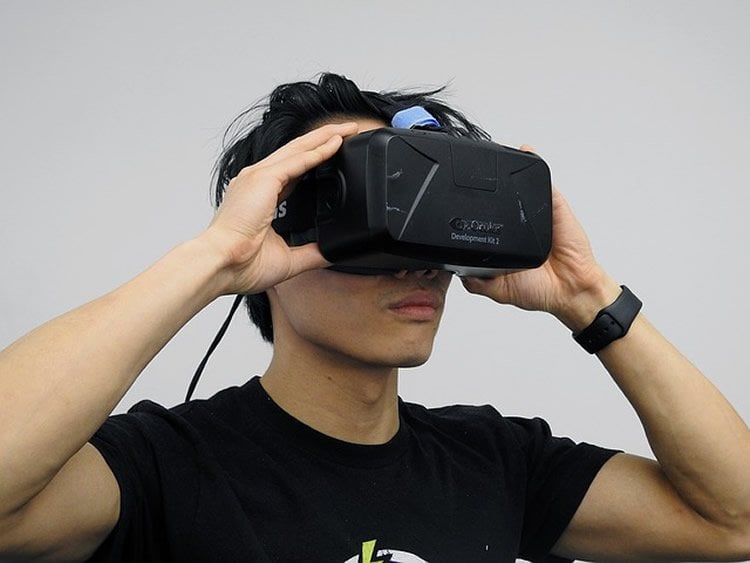Summary: Virtual reality can help recalibrate time perception and sensorimotor actions. Researchers believe the technology could help in the treatment of ASD, Parkinson’s disease and schizophrenia.
Source: University of Waterloo
Playing games in virtual reality (VR) could be a key tool in treating people with neurological disorders such as autism, schizophrenia and Parkinson’s disease.
The technology, according to a recent study from the University of Waterloo, could help individuals with these neurological conditions shift their perceptions of time, which their conditions lead them to perceive differently.
“The ability to estimate the passage of time with precision is fundamental to our ability to interact with the world,” says co-author Séamas Weech, post-doctoral fellow in Kinesiology. “For some individuals, however, the internal clock is maladjusted, causing timing deficiencies that affect perception and action.
“Studies like ours help us to understand how these deficiencies might be acquired, and how to recalibrate time perception in the brain.”
The UWaterloo study involved 18 females and 13 males with normal vision and no sensory, musculoskeletal or neurological disorders. The researchers used a virtual reality game, Robo Recall, to create a natural setting in which to encourage re-calibration of time perception. The key manipulation of the study was that the researchers coupled the speed and duration of visual events to the participant’s body movements.
The researchers measured participants’ time perception abilities before and after they were exposed to the dynamic VR task. Some participants also completed non-VR time-perception tasks, such as throwing a ball, to use as a control comparison.
The researchers measured the actual and perceived durations of a moving probe in the time perception tasks. They discovered that the virtual reality manipulation was associated with significant reductions in the participants’ estimates of time, by around 15 percent.

“This study adds valuable proof that the perception of time is flexible, and that VR offers a potentially valuable tool for recalibrating time in the brain,” says Weech. “It offers a compelling application for rehabilitation initiatives that focus on how time perception breaks down in certain populations.”
Weech adds, however, that while the effects were strong during the current study, more research is needed to find out how long the effects last, and whether these signals are observable in the brain. “For developing clinical applications, we need to know whether these effects are stable for minutes, days, or weeks afterward. A longitudinal study would provide the answer to this question.”
“Virtual reality technology has matured dramatically,” says Michael Barnett-Cowan, neuroscience professor in the Department of Kinesiology and senior author of the paper. “VR now convincingly changes our experience of space and time, enabling basic research in perception to inform our understanding of how the brains of normal, injured, aged and diseased populations work and how they can be treated to perform optimally.”
Source:
University of Waterloo
Media Contacts:
Matthew Grant – University of Waterloo
Image Source:
The image is credited to University of Waterloo.
Original Research: Open access
“Movement-Contingent Time Flow in Virtual Reality Causes Temporal Recalibration”
Ambika Bansal, Séamas Weech & Michael Barnett-Cowan.
Scientific Reports volume 9, Article number: 4378 (2019) doi:10.1038/s41598-019-40870-6
Abstract
Movement-Contingent Time Flow in Virtual Reality Causes Temporal Recalibration
Virtual reality (VR) provides a valuable research tool for studying what occurs when sensorimotor feedback loops are manipulated. Here we measured whether exposure to a novel temporal relationship between action and sensory reaction in VR causes recalibration of time perception. We asked 31 participants to perform time perception tasks where the interval of a moving probe was reproduced using continuous or discrete motor methods. These time perception tasks were completed pre- and post-exposure to dynamic VR content in a block-counterbalanced order. One group of participants experienced a standard VR task (“normal-time”), while another group had their real-world movements coupled to the flow of time in the virtual space (“movement contingent time-flow; MCTF”). We expected this novel action-perception relationship to affect continuous motor time perception performance, but not discrete motor time perception. The results indicated duration-dependent recalibration specific to a motor task involving continuous movement such that the probe intervals were under-estimated by approximately 15% following exposure to VR with the MCTF manipulation. Control tasks in VR and non-VR settings produced similar results to those of the normal-time VR group, confirming the specificity of the MCTF manipulation. The findings provide valuable insights into the potential impact of VR on sensorimotor recalibration. Understanding this process will be valuable for the development and implementation of rehabilitation practices.






